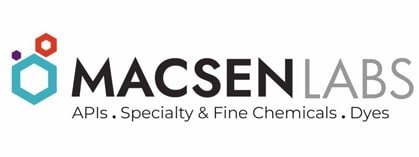
Home » speciality Dyes and Biological Stains » Leucocrystal Violet
What is Leucocrystal Violet?
Leucocrystal Violet (LCV) is a cationic triarylmethane dye and a benzenoid aromatic compound. It is a colorless dye and is a reduced version of gentian violet (crystal violet). It has a high affinity to cellulosic materials as well as protein-based substances and is therefore used in the detection of antimony in environmental and biological samples using spectrophotometric techniques.
Macsen Laboratories is the leading manufacturer and supplier of Leucocrystal Violet with ISO certification.
| PRODUCT SPECIFICATIONS | |
|---|---|
| PRODUCT NAME | Leucocrystal Violet |
| IUPAC Name | 4-[bis[4-(dimethylamino)phenyl]methyl]-N,N-dimethylaniline |
| SYNONYMS | Leucocrystal Violet; Leucogentian Violet; C.I. Basic Violet 3; Leucomethyl green; Crystal Violet leucobase; Tris(4-dimethylaminophenyl)methane |
| CAS No | 603-48-5 |
| Molecular Formula | C25H31N3 |
| Molecular weight | 373.5 g/mol |
| PubChem CID | 69048 |
TECHNICAL SPECIFICATIONS
| SR. No | Criteria | Limit/Specification |
|---|---|---|
| 1 | Appearance | Grayish to white lavender powder |
| 2 | Infrared spectrum | Conforms to Structure |
| 3 | Wavelength (C = 0.01 G/L IN 0.1N HCL IN MEOH) Extinction Coefficient |
257 - 263 nm ≥ 700 |
| 4 | Wavelength Extinction Coefficient |
201 - 207 nm ≥ 38000 |
| 5 | Wavelength Absorbance |
587 - 593 nm ≤ 0.01 |
| 6 | ELEMENTAL ANALYSIS: CARBON: NITROGEN: |
77.6 - 83.2 % 10.8 - 11.6 % |
Uses
- The hemoglobin in the blood reacts with Leucocrystal Violet and hydrogen peroxide, turning the blood impression purple/violet. As a result, the dye is frequently used to stain blood remains on porous and non-porous surfaces. However, because this reagent also includes hydrogen peroxide, it may produce foaming and loss of detail when used on strong bloodstain.
- Histamine-producing lactobacilli in cheese have been identified using LCV.
Resources
Biological Stains | Classification, Examples & Uses
Buy high purity Leucocrystal Violet from the leading manufacturer with ISO certification. For buying, send us an enquiry-
